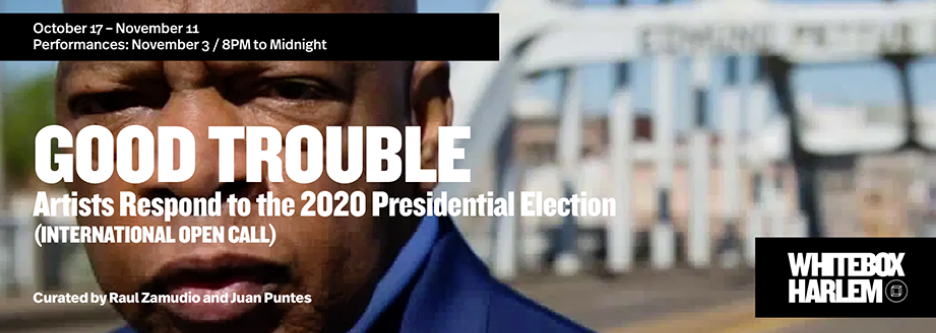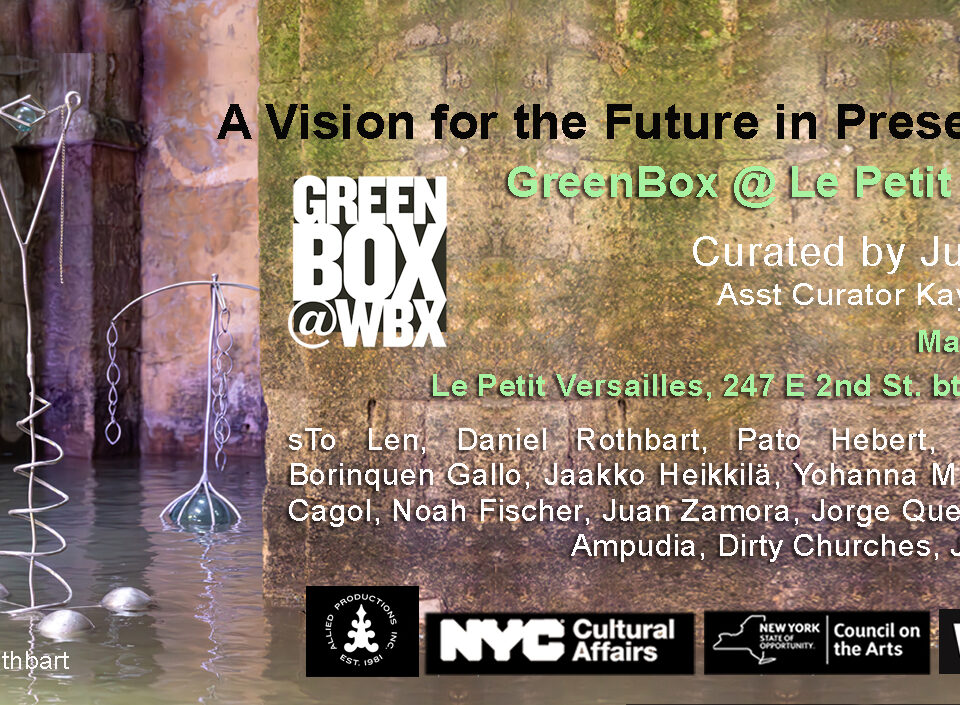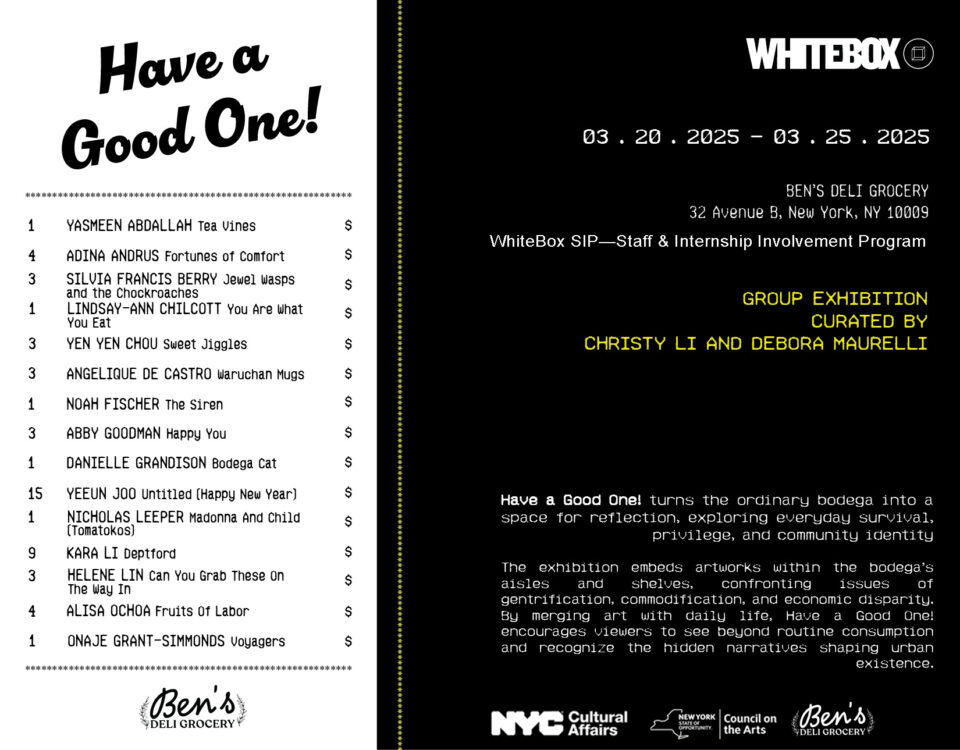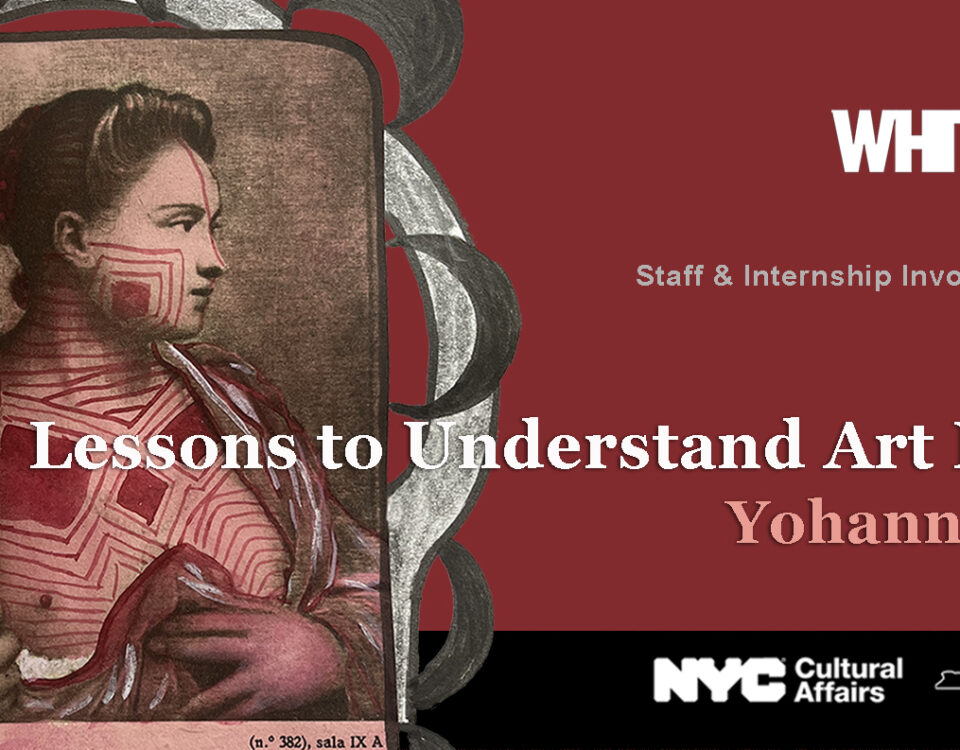
FireHouse Lit Lounge: Erotics Of Architecture
September 15, 2020EXODUS V: Aesthetics in the Political
November 7, 2020Curated by Raul Zamudio & Juan Puntes
Oct 10 – Nov 11, 2020 | Open Public Installation
Oct 17 & Oct 25 | Receptions
Nov 3, @6pm – Midnight | Presidential Election Night Performances
Participating Artists:
Al Miller
Alan Carrasco
Aldo Tambellini
Angel Vergara
Anita Glesta
Anonymous
Avelino Sala
Barbara Alper
Blanka Amezkua
Bradley McCallum
Brian Bellott
Cecilia Jurado Chueca
Charlee Swanson
Chin Chih Yang
Christine Davis
Claudia Baez
Colette Lumiere
Despo Magoni
Dominga Valles
Duke Riley
Ebenezer Singh
Emma McCagg
Enrique Jezik
Eugenio Merino e INDECLINE
Ferran Martin
Firoz Mahmud
Franz Vila
gua_s
Ivan Navarro & Courtney Smith
Jacobo Borges
Jean Pierre Muller
Jeanette Doyle
Jeffrey Hargrave
Jeffrey Perkins
Jelena Tomasevic
Jim Costanzo
Joan Logue
Joanne Ross
Joaquin Segura
Joel Diaz/Jolibe
John Monteith
Jose Luis Ortiz Tellez
Julia San Martin
Marjiana Pende
Martin Durazo & Kristin Bauer
Mary Mattingly
Masaaki Noda
Miguel Rodriguez Sepulveda
Ned & Shiva Productions
Noritoshi Hirakawa
Oscar Oiwa
Ouma
Pablo Helguera
Pasha Radeski
Pedro Sanchez III
Rirkrit Tiravanija and Tomas Vu
Robert Boyd
Roberto Visani
Roland Gebhardt
Rosebud Ebenezer
Ruben Verdu
Sachigusa Yasuda
Sarah Maple
Sari Tervaniemi
Stefano Cagol
Susanna Sully
Tania Candiani
Terry Berkowitz
Teresa Margolles
The Renowned Annoying Nun
Tiim| Joseph Ayers + Aya Uekawa
Tom Fruin
Tomoni Shintaku
Victor Sheely
Whitner FaGo
William Anastasi
Xu Bing
Yohanna Roa
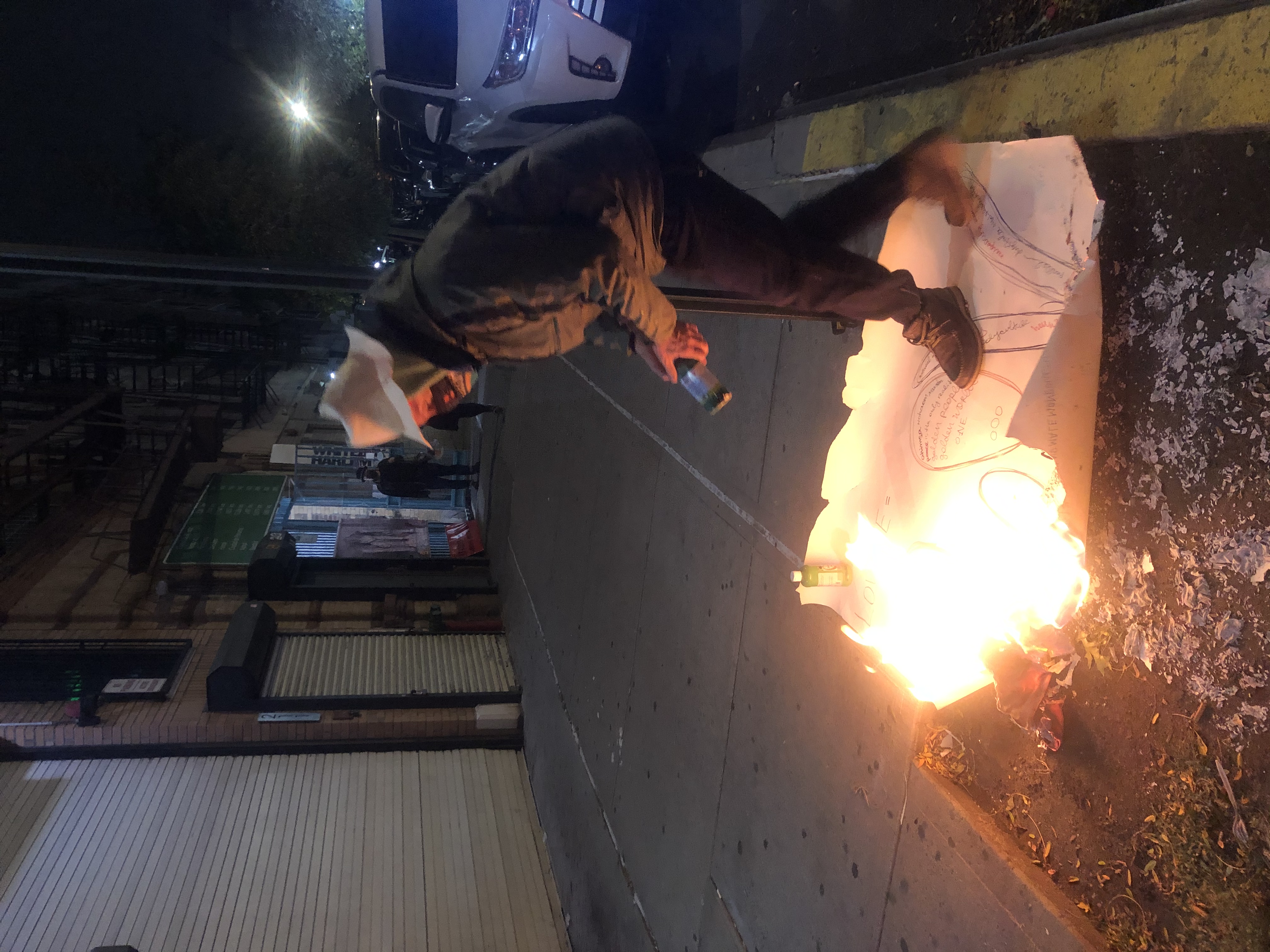
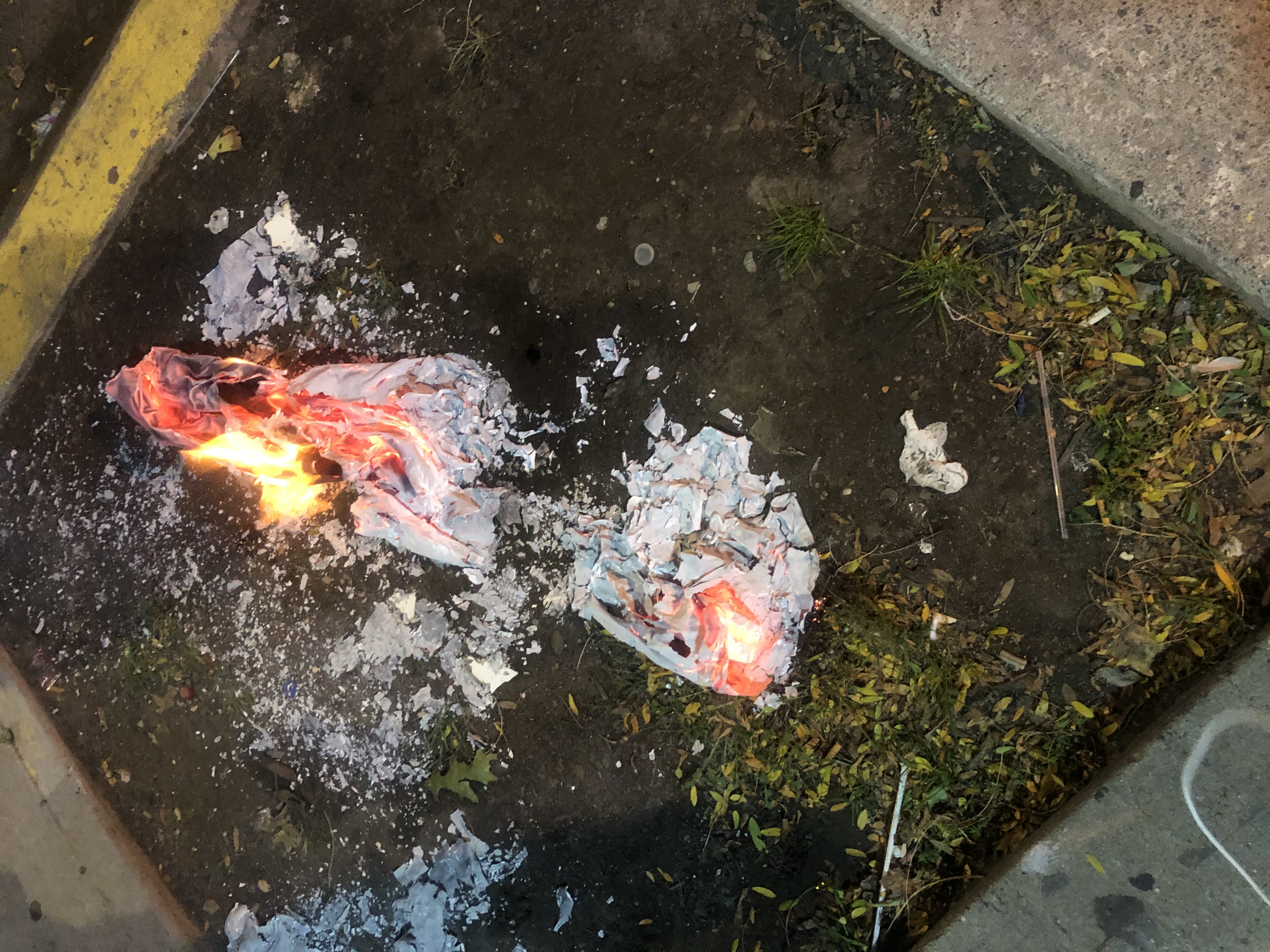
Collaborators:
Al Limite Collective, The Martin E. Segal Theater Center, Revolution Books, SUBLIME Art Paper, The Living Theatre, WE WILL NOT BE SILENT, & “Shipibo Conibo Center, NY”
The exhibition curators would like to thank Kyoko Sato, Elizabeth Rogers, Kenji Tokumitsu, Lara Pan, and Blanca De La Torre for their contribution helping select artists for this unique exhibition.
Of the many things that Senator John Lewis has been noted for besides his heroic and often dangerous struggle for racial equality, was his strategy of non-violent, civil disobedience that he poetically coined as “good trouble.” The full passage of which his clarion call appears is in a 2018 tweet: “Do not get lost in a sea of despair. Be hopeful, be optimistic. Our struggle is not the struggle of a day, a week, a month, or a year, it is the struggle of a lifetime. Never, ever be afraid to make some noise and get in good trouble, necessary trouble.” As the 2020 Presidential Election approaches, it is now more than ever to engage in “good trouble” whether this be in the streets, the workplace, the classroom, or the exhibition space.
Artists have a history of expressing variants of Lewis’ sociopolitical resistance through their art when confronted by injustice. Some early instances include Ben Shahn’s The Passion of Sacco and Vanzetti (1931-32 ) and Jacob Lawrence’s Struggle: From the History of the American People (1954-56), and since then a slew of artists not only working singularly but also in collectives. And it is in this spirit that Good Trouble: Artists Respond to the 2020 Presidential Election dovetails on, as it is more than an exhibition but a mobilization towards the most important election in recent US history and attendant ramifications both within the US and abroad.
President Trump’s withdrawal from the Paris Agreement exacerbating climate change, the building of a wall along the US/Mexico border, the violent dehumanization of migrants including children along the aforementioned divide, and Trump’s xenophobia and islamophobia are just a few of many examples of the far-reaching consequences of current administrative policies that need to be stopped, for the sake of the planet, on November 3, 2020.
Because of the repercussions of dangerous foreign decisions as well as domestic by the current government, Good Trouble: Artists Respond to the 2020 Presidential Election demands it to be an international exhibition. It is also an assemblage, a convocation, or campaign that will launch artistic salvos against those who seek to oppress the common good. Analogous to the exhibition’s formal heterogeneity is its varied subject matter that rubs up against all forms of social inequality, police brutality, nationalism, environmental destruction and so forth.
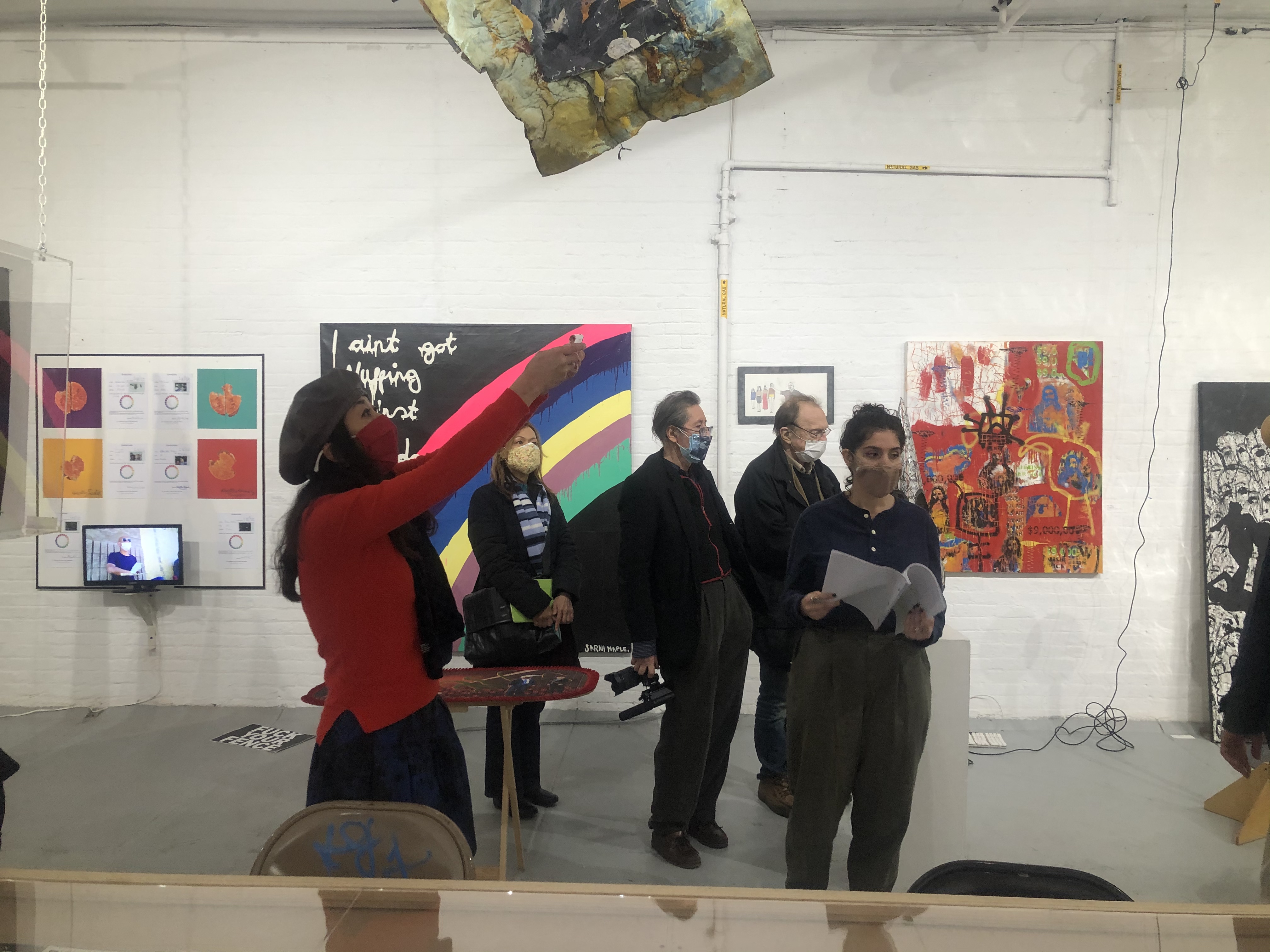
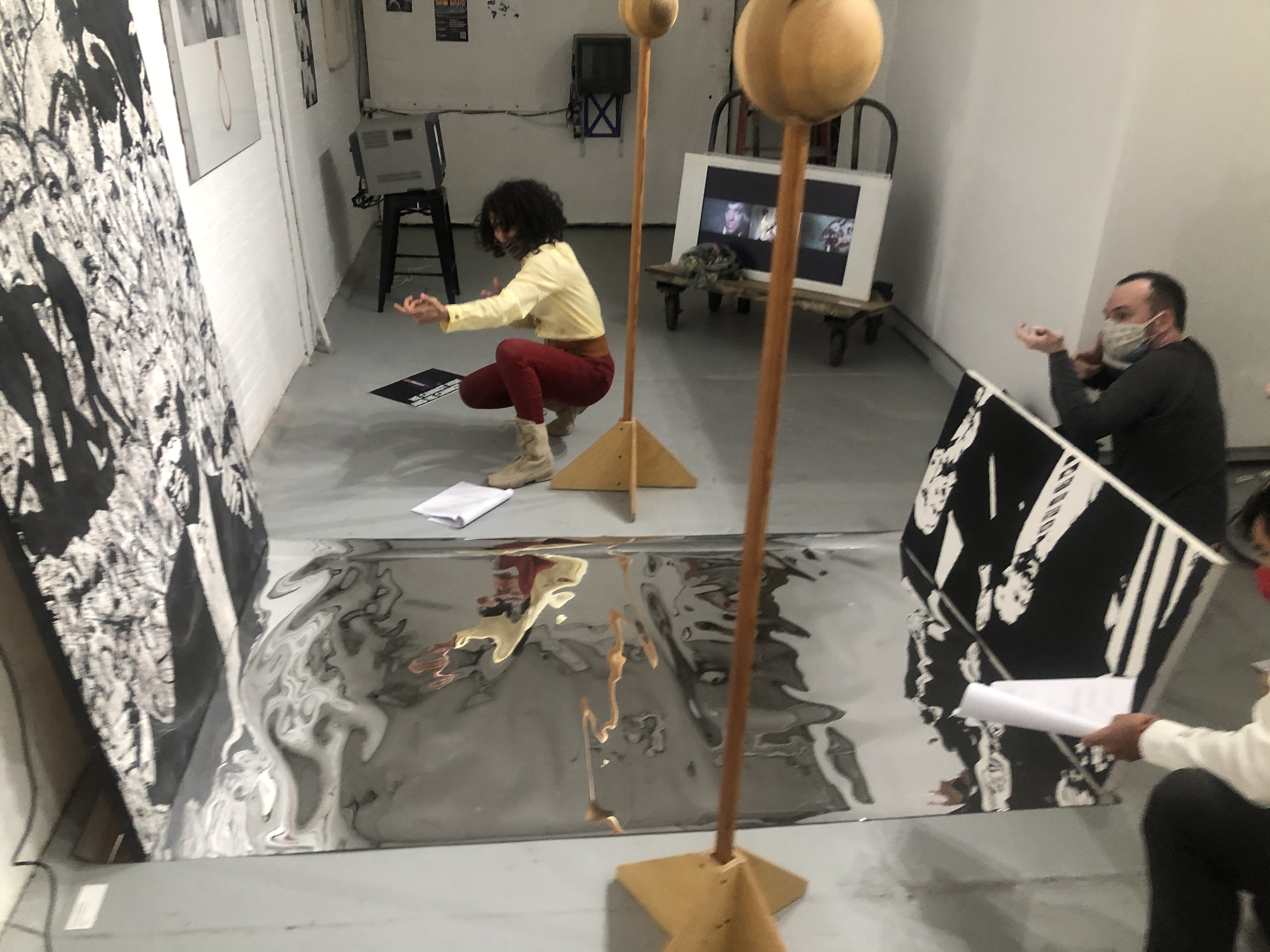
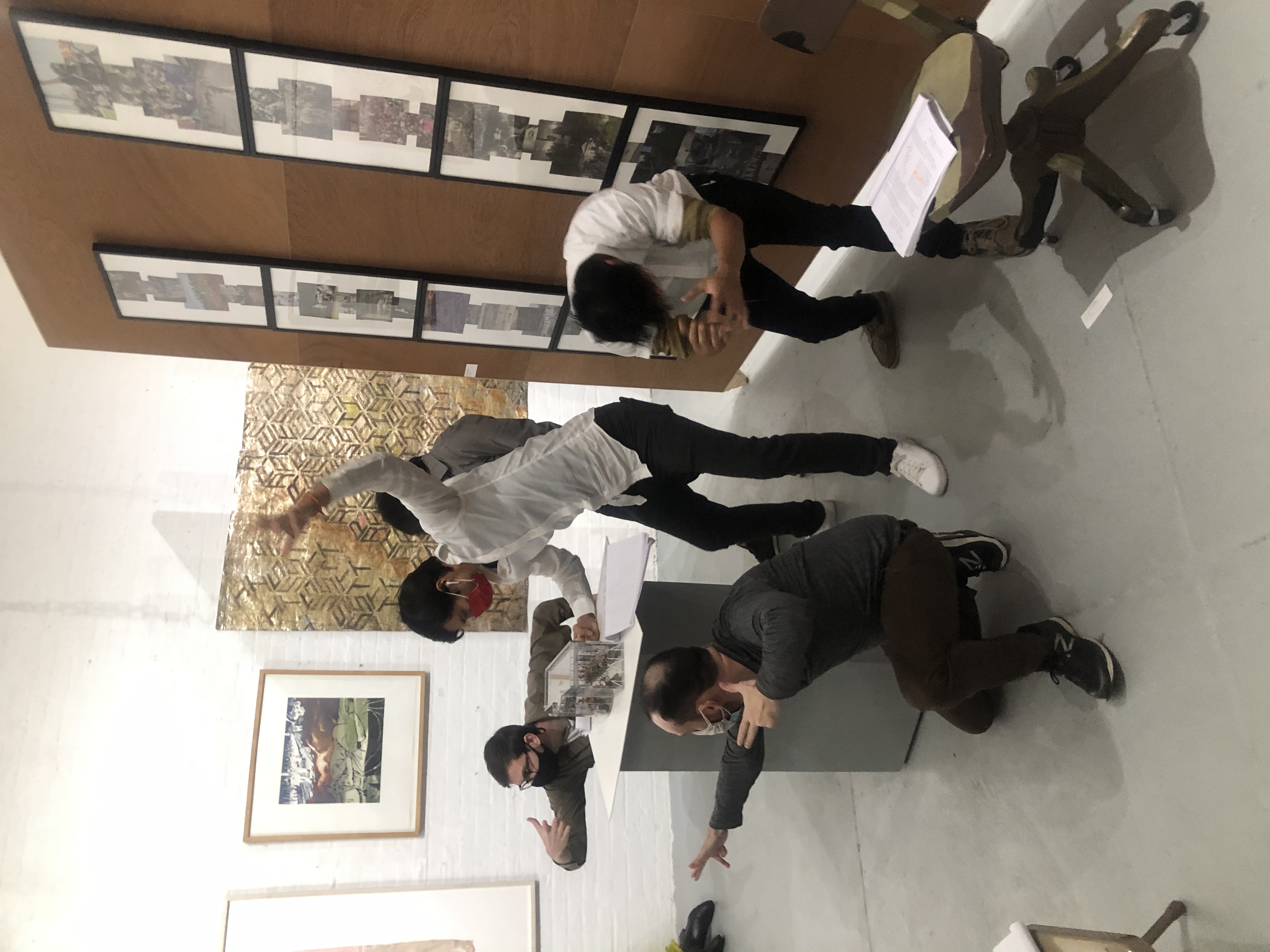
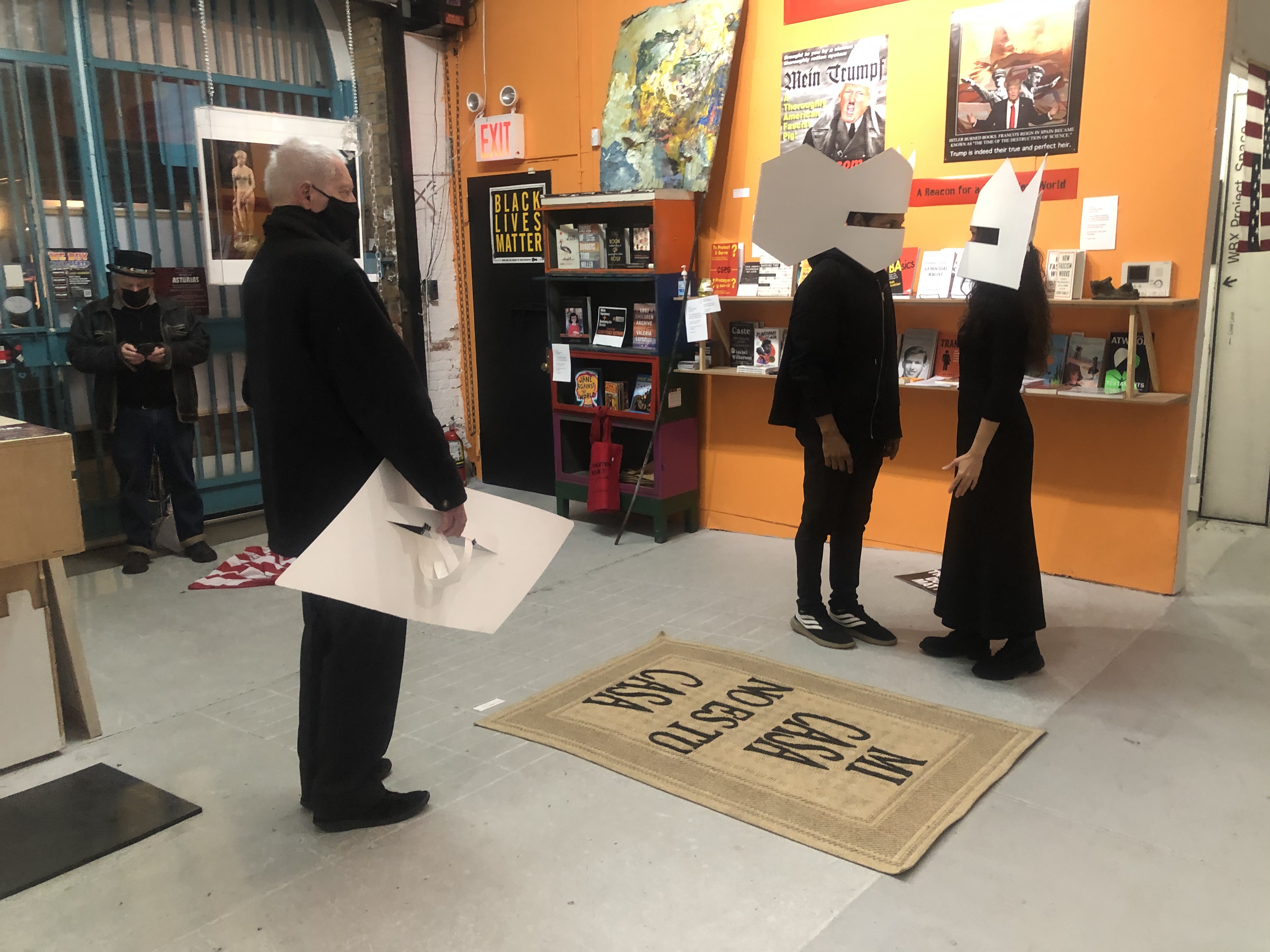
The exhibition’s curatorial structure entails to mirror the intensification of the national political landscape leading up to the 2020 Presidential Election. It will do this by incrementally installing artworks officially starting on October 10, safe opening reception (rsvp) in-situ and online on October 25, culminating with the election with performances, live feeds of the election from both Democratic and Republican headquarters, as well as podcasts from artists in Washington DC streets engaging in guerrilla journalism as performance art.
All artists: we call out to you to join us and be the New York Vanguard in this decisive historical moment where we take our lives back for the sake of ourselves and our future, on November 3, 2020.
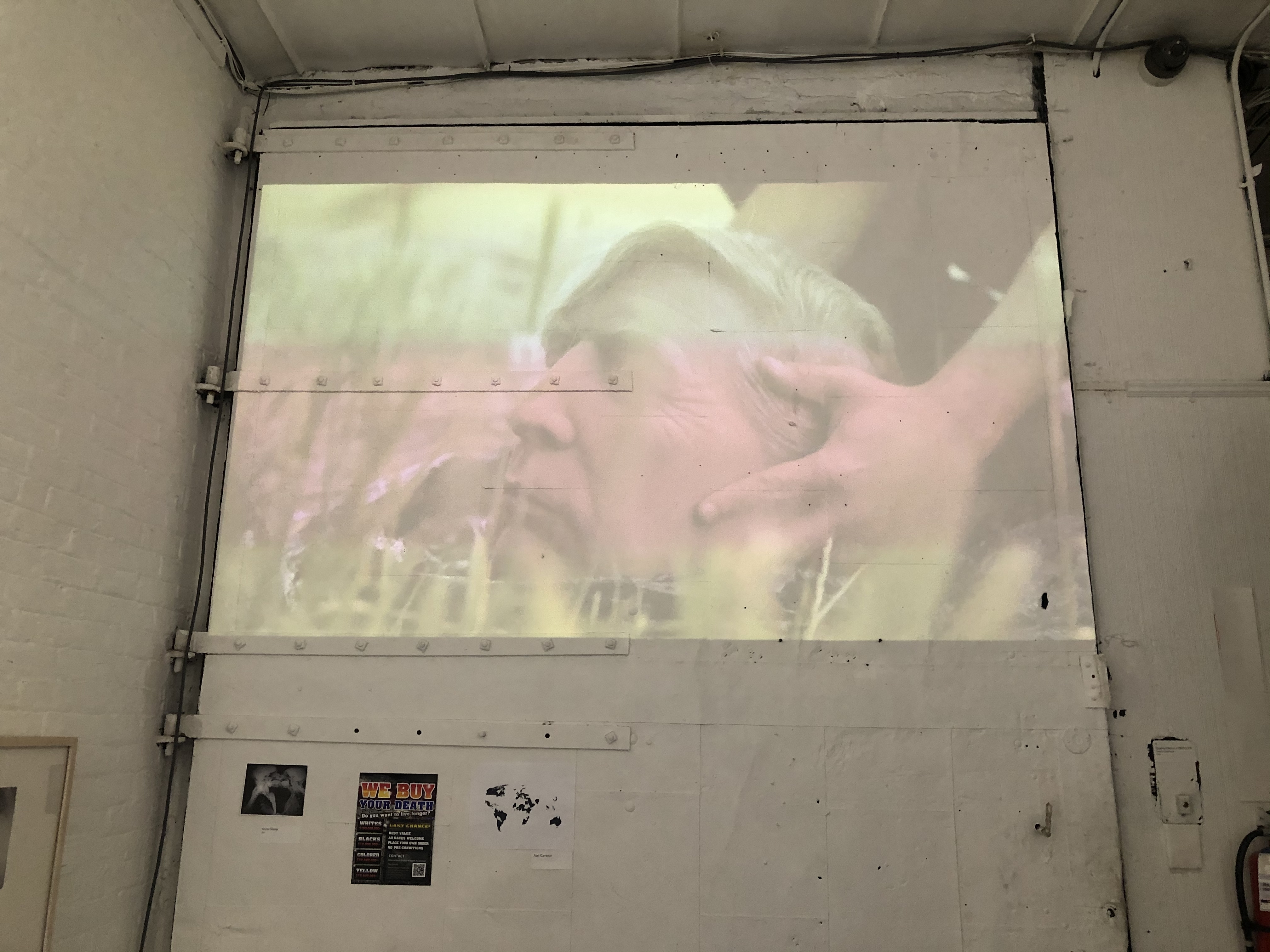
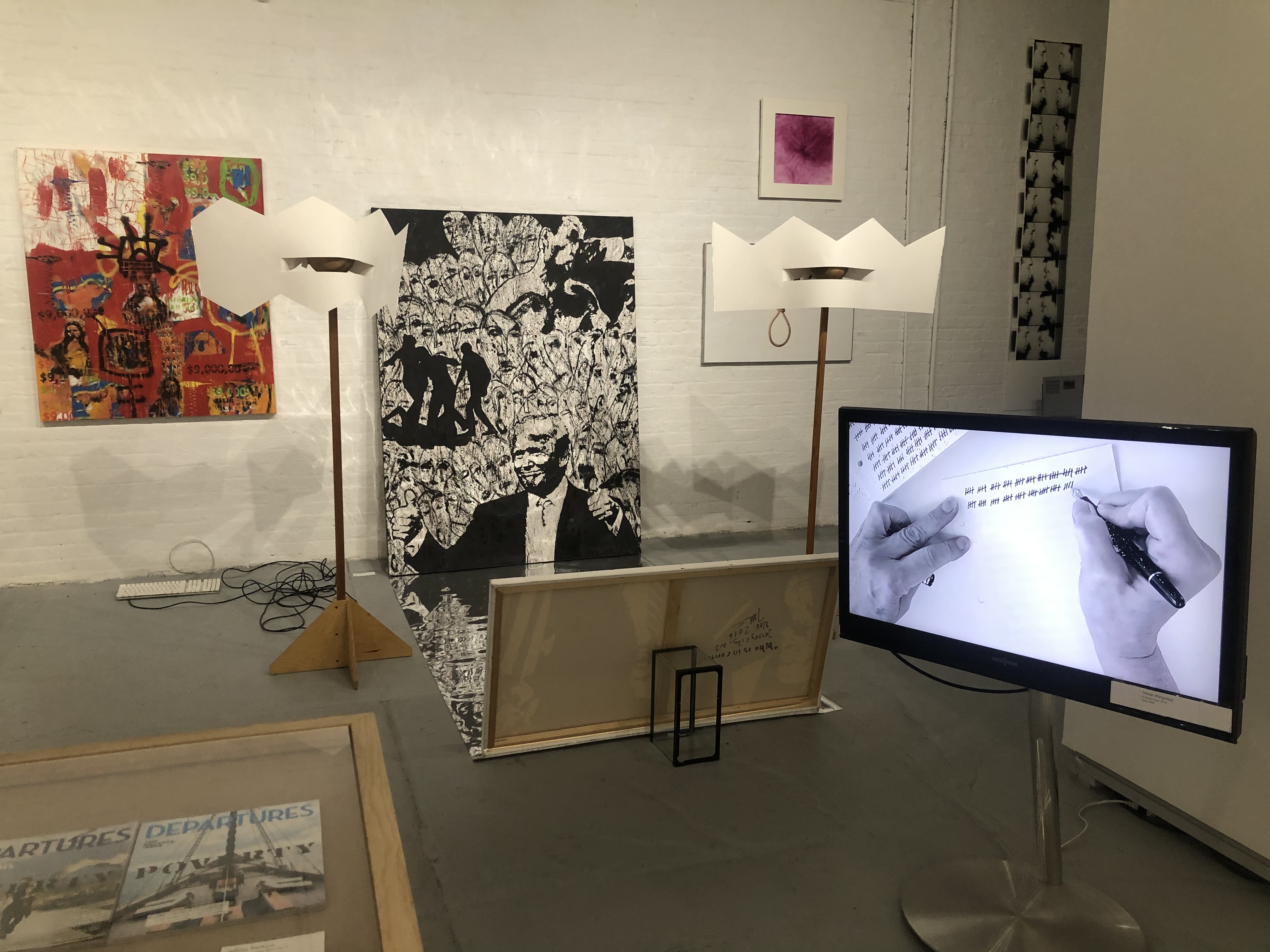
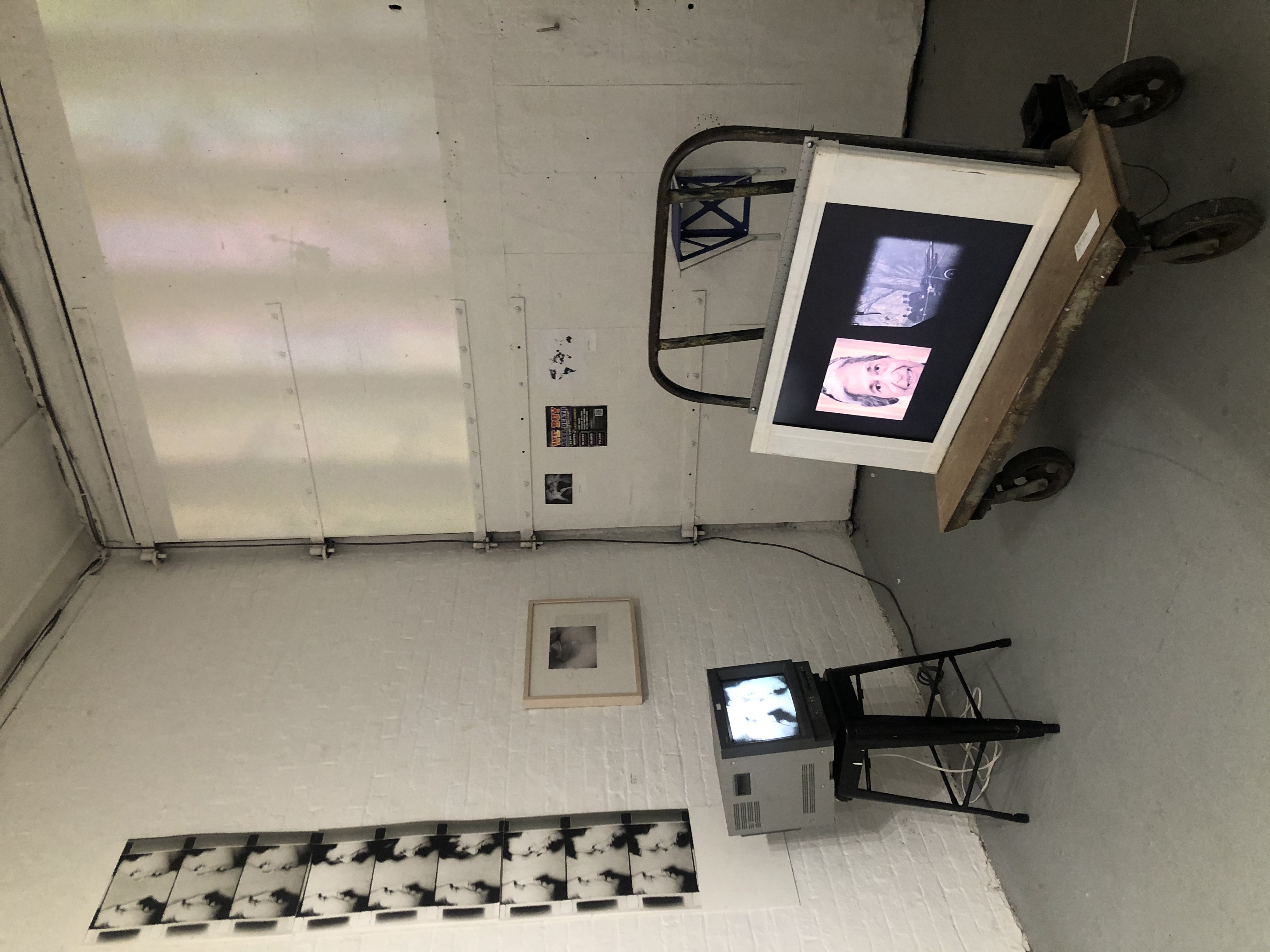
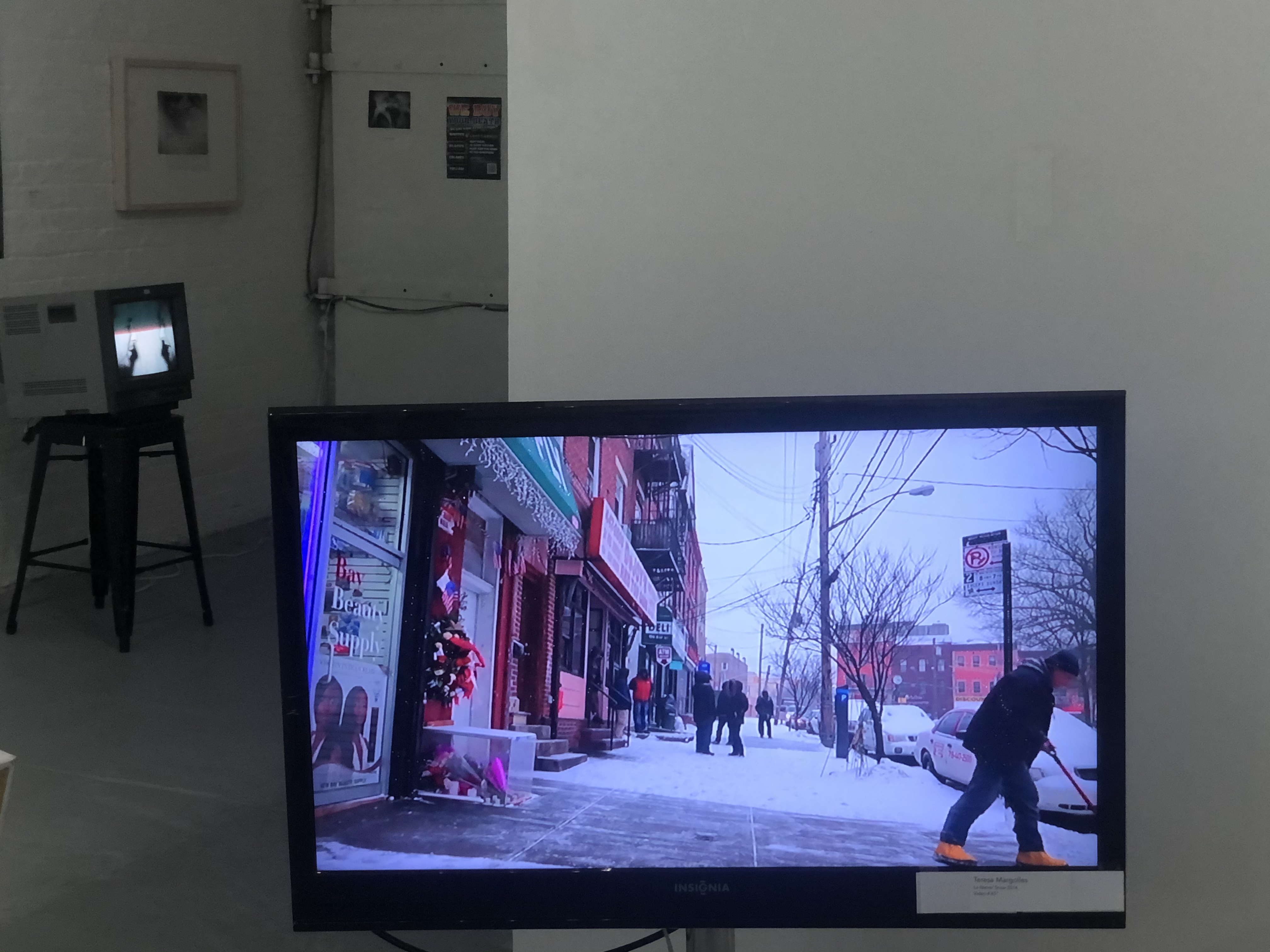
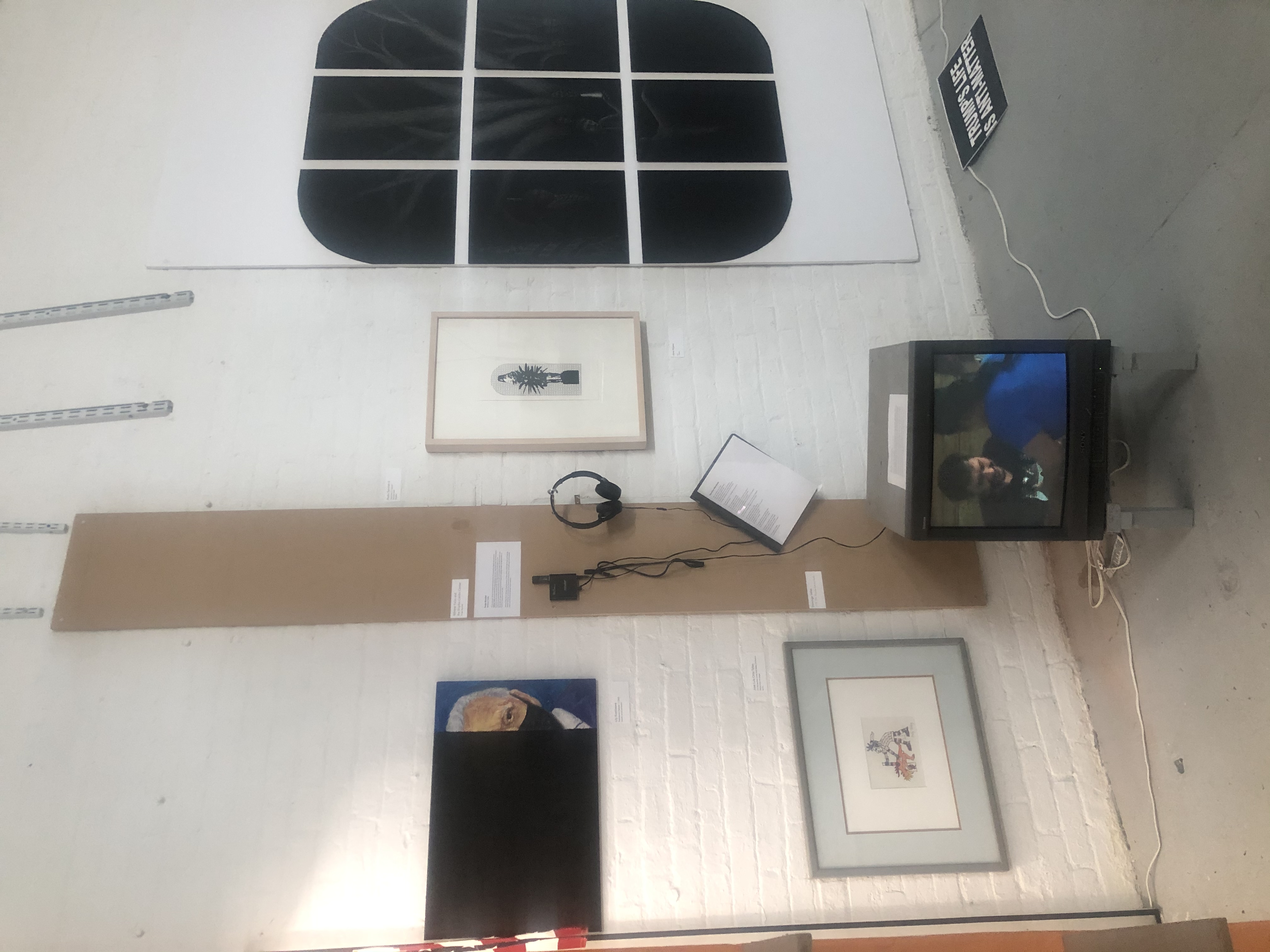
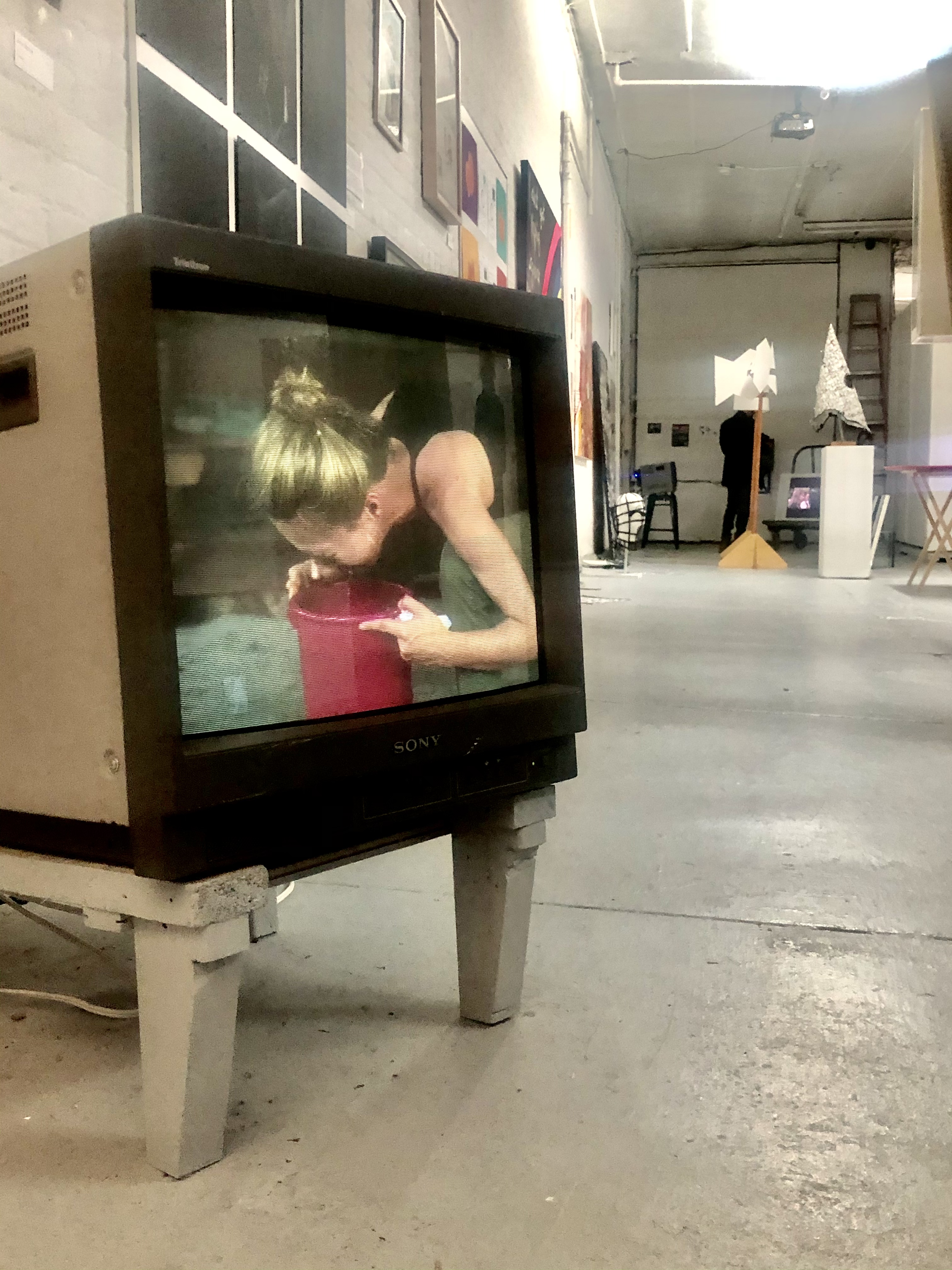
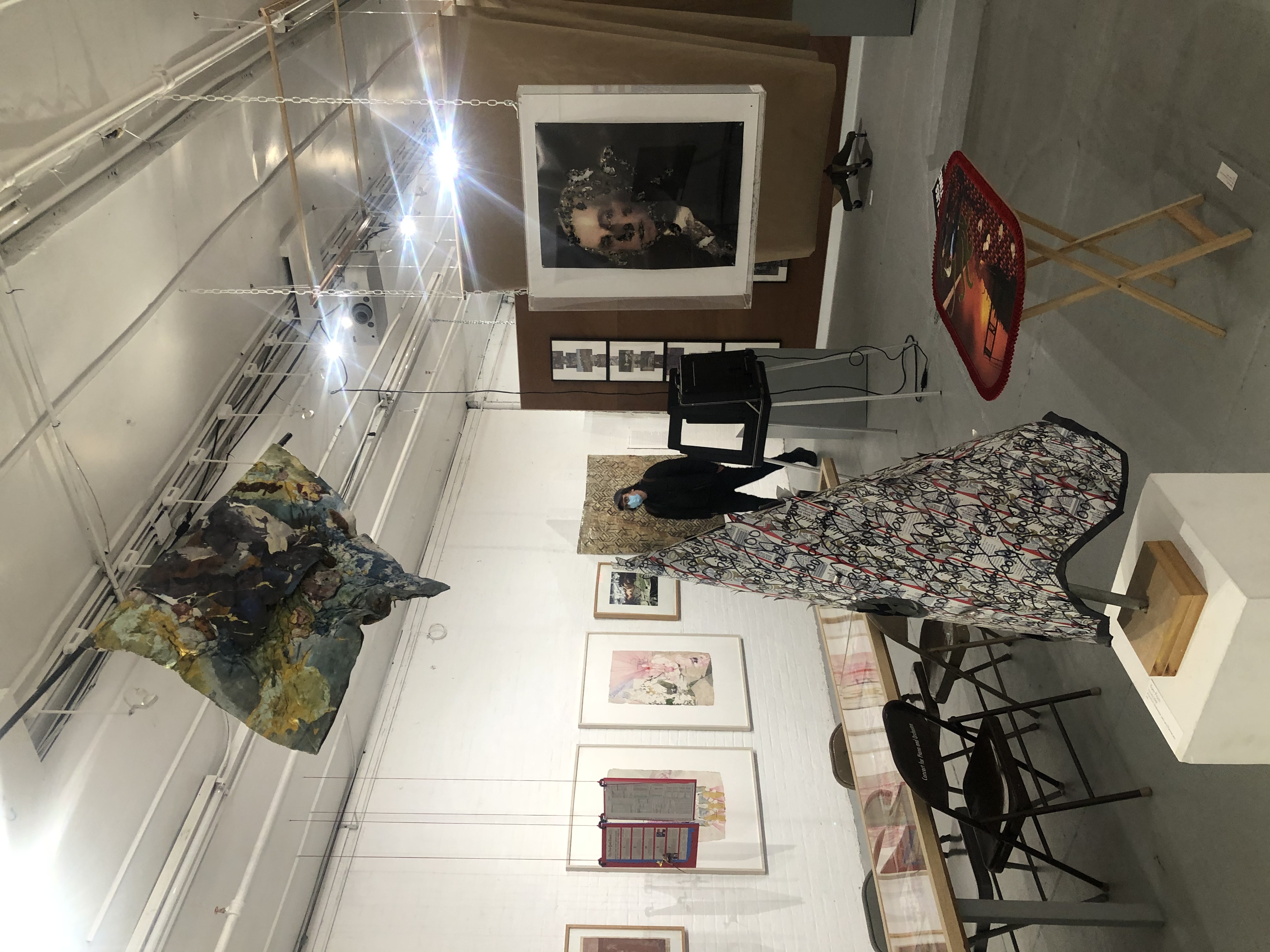
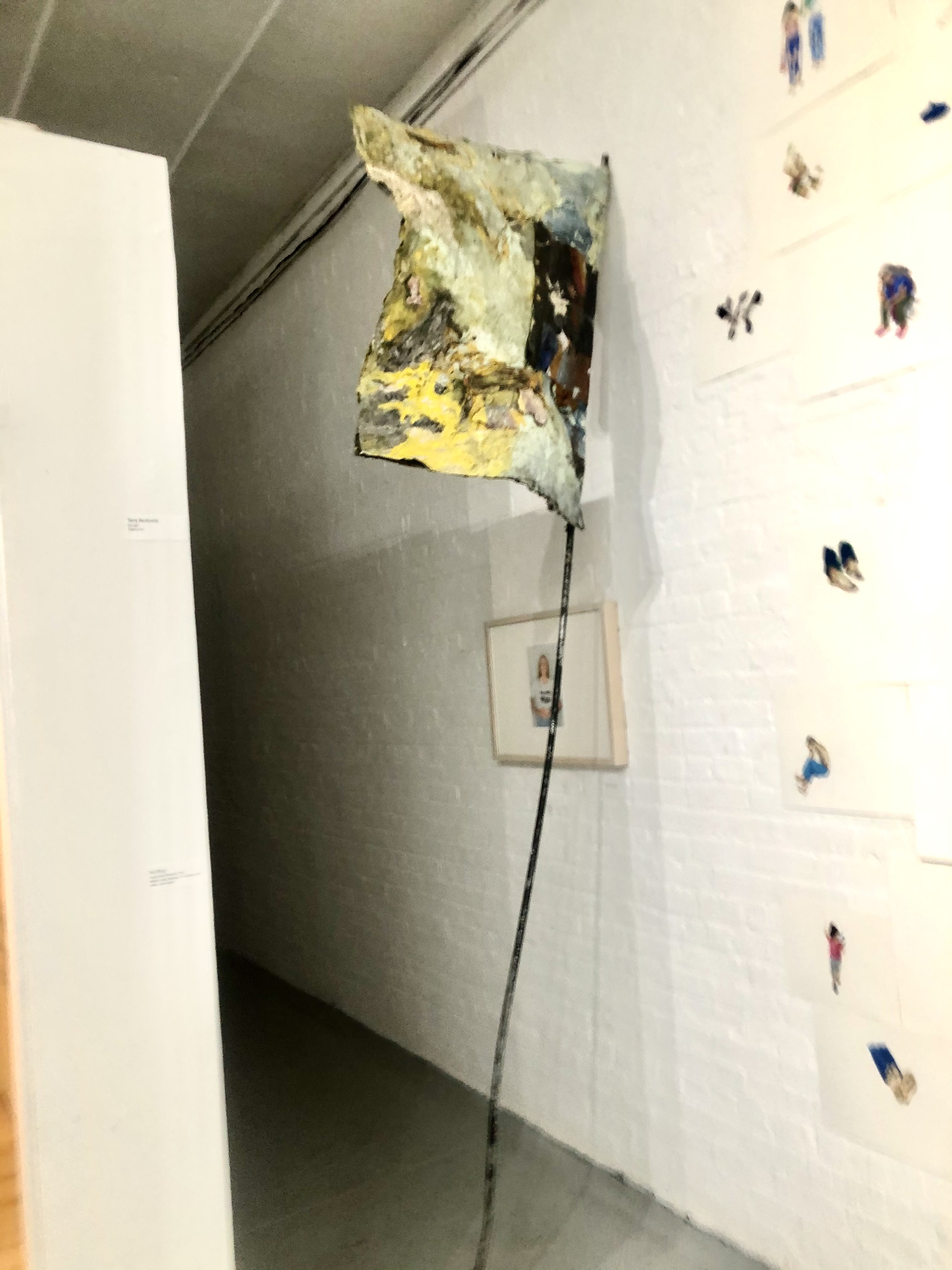
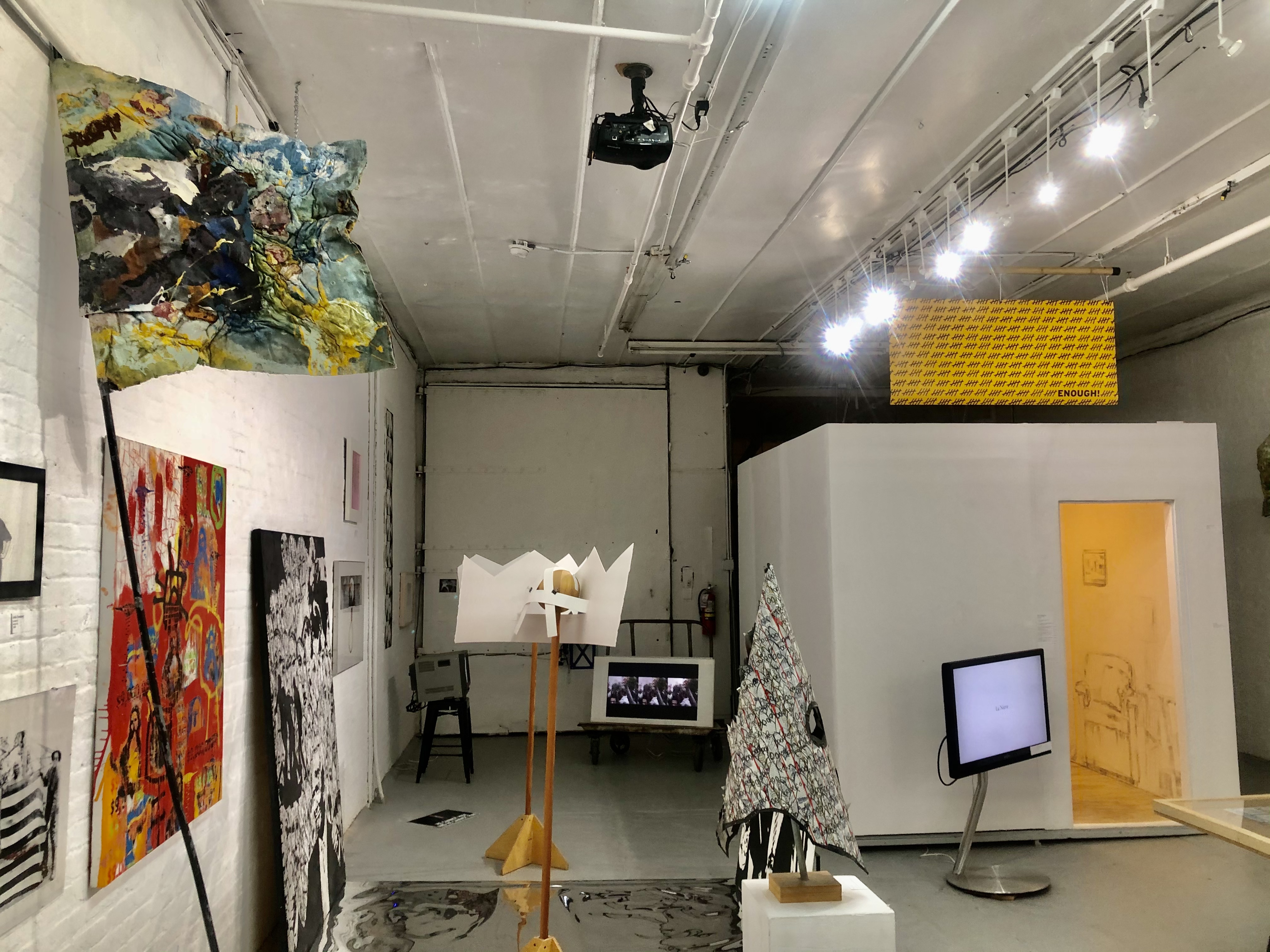
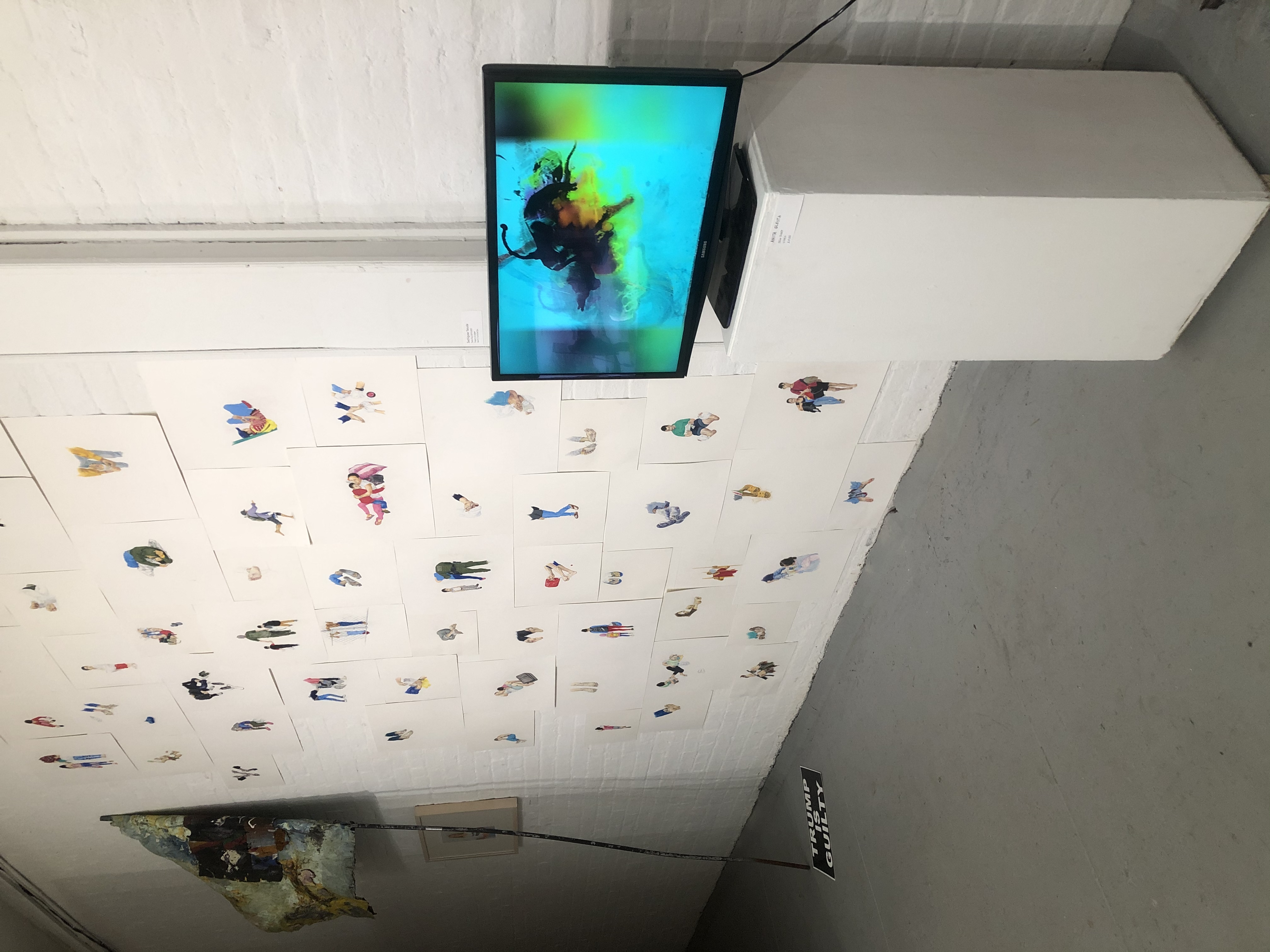
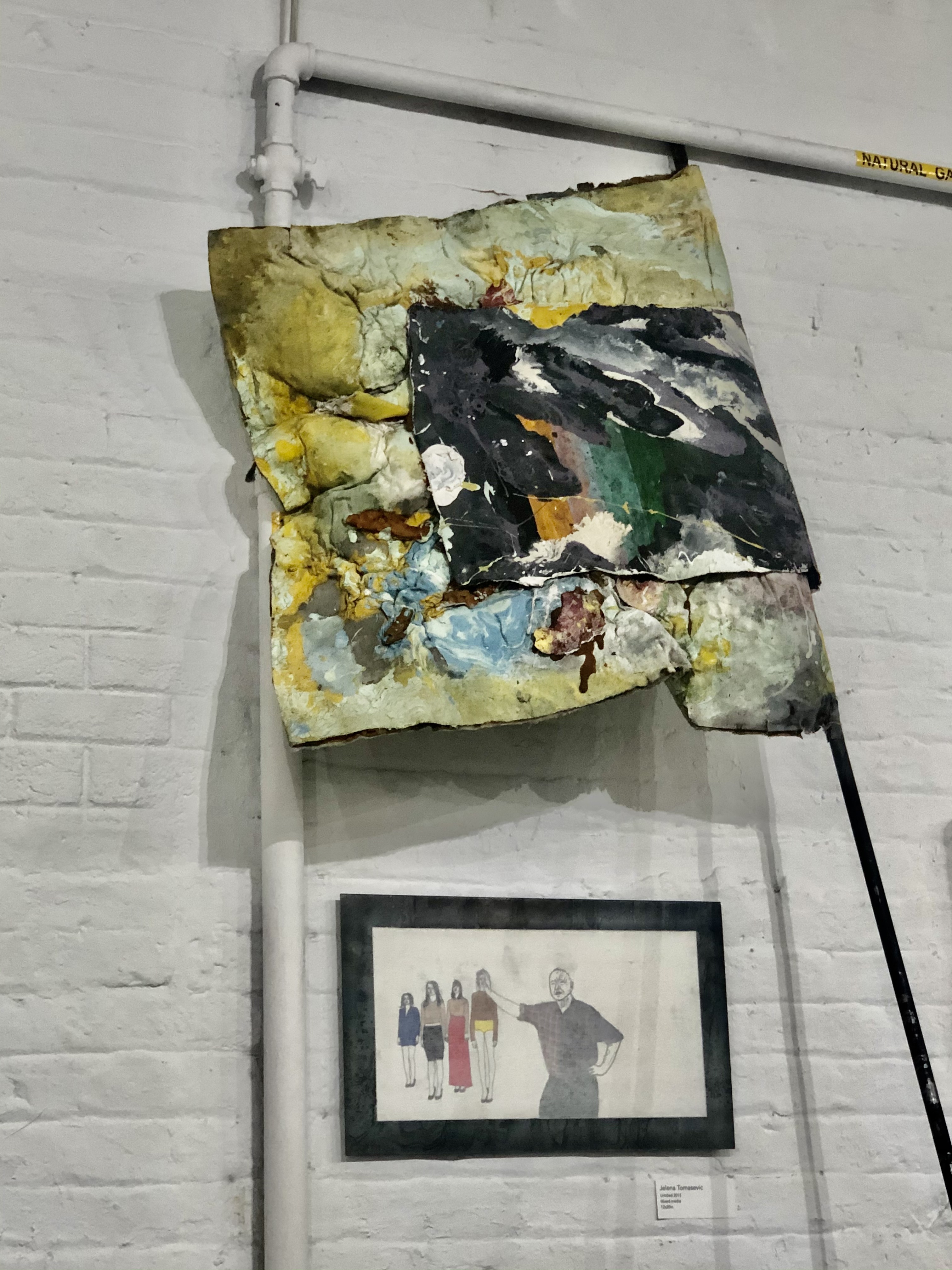
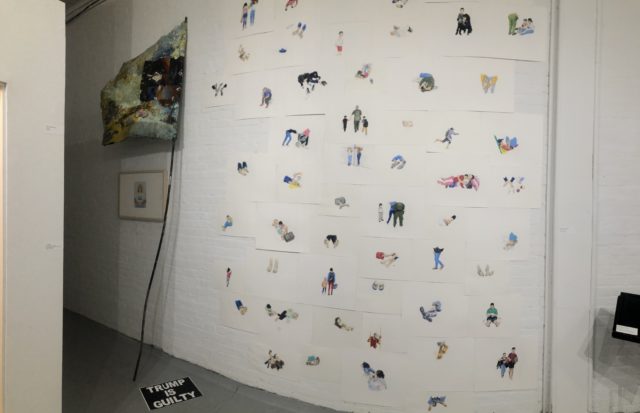
De las muchas cosas por las que el senador John Lewis ha sido señalado además de su heroica y a menudo peligrosa lucha por la igualdad racial, fue su estrategia de desobediencia civil no violenta que acuñó poéticamente como “BUEN PROBLEMA”. El pasaje completo del cual aparece su llamada clarificada está en un tuit de 2018: “No te pierdas en un mar de desesperación. Sé optimista, sé optimista. Nuestra lucha no es la lucha de un día, una semana, un mes o un año, es la lucha de nuestra vida. Nunca, jamás tengas miedo de hacer algo de ruido y meterte en buenos problemas, problemas necesarios”. A medida que se acercan las elecciones presidenciales de 2020, ahora más que nunca es debido involucrarse en “buenos problemas” ya sea en las calles, el lugar de trabajo, el aula o el espacio de exposición.
Los artistas tienen una historia de expresar variantes de la resistencia sociopolítica de Lewis a través de su arte cuando se enfrentan a la injusticia. Algunos primeros casos incluyen “La Pasión de Sacco y Vanzetti” (1931-32) de Ben Shahn y “La Lucha” de Jacob Lawrence: De la historia del pueblo estadounidense (1954-56), y desde entonces una serie de artistas no sólo trabajando singularmente sino también en colectivos. Y es con este espíritu que “Good Trouble: Artists Respond a las elecciones presidenciales de 2020” sigue, ya que es más que una exposición, mas bien una movilización hacia las elecciones más importantes en la historia reciente de Estados Unidos y las ramificaciones de los asistentes tanto dentro de los Estados Unidos como en el extranjero.
La retirada del presidente Trump del Acuerdo de París exacerbando el cambio climático, la construcción de un muro a lo largo de la frontera entre Estados Unidos y México, la violenta deshumanización de los migrantes, incluidos los niños a lo largo de la mencionada división, y la xenofobia y la islamofobia de Trump son solo algunos de los muchos ejemplos de las consecuencias de gran alcance de las políticas administrativas actuales que deben detenerse, por el bien del planeta, el 3 de noviembre de 2020.
Debido a las repercusiones de las peligrosas decisiones para con el extranjero, así como nacionales por parte del gobierno actual, “Good Trouble: Artists Respond to the 2020 Presidential Election” demands it to be an international exhibition. También es un conjunto, una convocación o campaña que lanzará salvas artísticas contra aquellos que buscan oprimir el bien común. Análogo a la heterogeneidad formal de la exposición es su variada materia que se frota contra todas las formas de desigualdad social, brutalidad policial, nacionalismo, destrucción ambiental y así sucesivamente.
La estructura curatorial de la exposición implica reflejar la intensificación del panorama político nacional previo a las elecciones presidenciales de 2020. Lo hará instalando gradualmente obras de arte oficialmente a partir del 17 de octubre, la recepción de apertura segura (rsvp) in-situ y virtual ocurrirá el 25 de octubre entre las 5pm y 7pm, culminando el 3 de noviember con actuaciones, transmisiones en vivo de los resultados electorales desde la sede demócrata y republicana, así como podcasts de artistas transmitidos desde las calles de Washington DC que participan en el periodismo guerrillero como arte de performance.https://www.youtube.com/embed/FaaN0R67aPc?feature=oembed
Así pues, pedimos a todos los artistas que se unan a nosotros y sean la Vanguardia de Nueva York en este momento histórico decisivo en el que recuperamos nuestras vidas por el bien propio y el de nuestro futuro, el 3 de noviembre de 2020.

